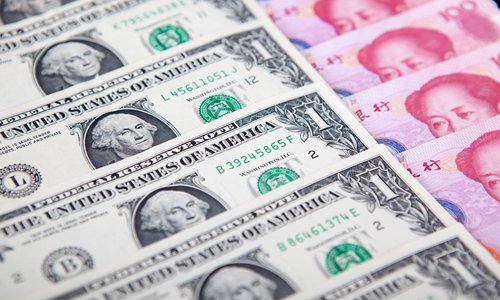China’s foreign exchange regulator relaxes cross-border flows for multinationals
SAFE relaxes cross-border flows for multinationals

Photo: VCG
China's foreign exchange regulator on Monday published rules aimed at further facilitating cross-border capital flows for transnational companies operating in the country.
The new rules greatly simplify the registration process for multinational companies borrowing from overseas or lending money abroad, and make it easier for them to manage cross-border capital, China's State Administration of Foreign Exchange (SAFE) said on Monday.
The measure was announced following a February circular on detailed rules on how foreign workers can engage in cross-border income and expenditure transactions, capital transfers, and foreign-exchange settlements if they take part in a stock incentive program in a company listed on the Chinese mainland, said the SAFE.
Multinationals could, on the premise of prudence and discretion, combine quotas of foreign loans enjoyed by its subsidiaries registered across China and conduct the foreign loan business according to commercial practices, the SAFE said in a circular on its website.
The procedures for multinationals borrowing from overseas or lending money abroad have also been greatly simplified. The previous practices of separate registration and documentation were based on currency types and creditors.
The new regulations took effect on Monday, representing another initiative by the SAFE to improve the climate for trading companies as part of the government's broader reform to improve regulations and services.
In October, the SAFE abolished 17 regulations on foreign-exchange management to promote trade and investment facilitation.
Those regulations involved foreign-exchange payments for imports, trade in services and foreign debt, as well as foreign-exchange management for financial institutions, companies and individuals.
In 2018, a total of 60,533 foreign-invested companies were set up in China, up 69.8 percent year-on-year, according to the Ministry of Commerce on Friday.
